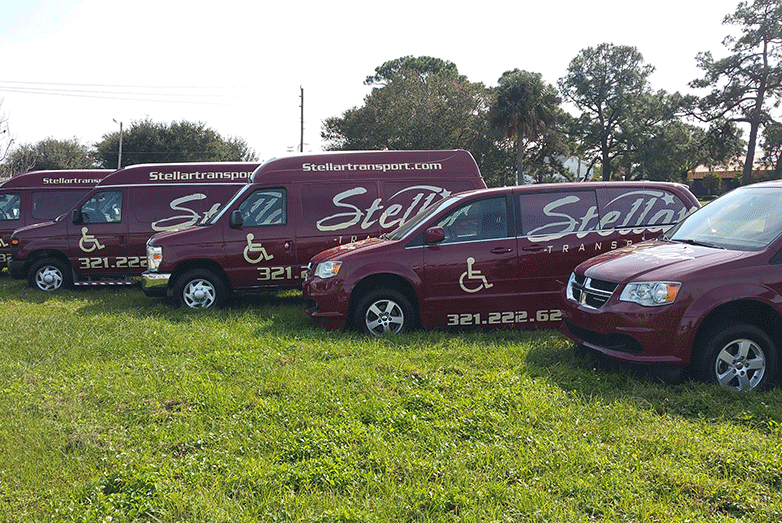As Melbourne’s leading local and long-distance non-emergency medical transportation service, we only use ADA compliant vehicles. ADA Requirements are outlined and implemented by the Americans with Disabilities Act (ADA) for title II and title III. These requirements, updated in 2010, pay close attention to issues reported over the last 20 years.
If a service is using vehicles manufactured prior to 2010, you may want to ask if they have made all necessary changes to vehicles so that they comply with the latest sets of standards. All of our vehicles are 2013 or newer, and updated promptly upon any changes in standards or best practices.
Even newer model vehicles may fail to meet all of the strict rules and regulations. It’s important to know at least some of these regulations so that you know what to look for to ensure you are getting the safest and most comfortable ride possible.
ADA Requirements For Private Transportation
ADA requirements take all types of disabilities into consideration, including circulatory, respiratory, mobility, or neurological disabilities. All of these disabilities and more may lead to the usage of canes, braces, crutches, walkers or wheelchairs in order to get around. As a result, all forms of assistant walkers must be accounted for in the overall design of ADA compliant vehicles.
The ADA’s Title III provision requires private transportation services to provide vehicles that are accessible to individuals with disabilities. As a non-emergency medical transportation service that specializes in wheelchair and stretcher patients, we feel it is our duty to operate state of the art ADA compliant vehicles that ensure the comfort and safety of all passengers.
ADA Vehicle Accessibility: What Are The Requirements?
Sec. 38.23 of ‘Mobility aid accessibility’ is heavily detailed with ADA regulations regarding every aspect of the vehicle, from the lift to the seatbelts and restraints.
Here is a look at some of the many regulations you will find outlined by the ADA. Knowing some of the basics to look out for will help you pinpoint a safe vehicle when you see one.
- All vehicles must be equipped with a level-change mechanism or some sort of lift, ramp or other approved mechanism to assist getting patients in and out.
- The ramp/lift must have a loading capacity of at least 600-pounds. If providing bariatric transportation, you may need a lift that is capable of supporting more weight than this. The lift should say directly on it how much weight it can load.
- Special safety systems must be in place to prevent the vehicle from moving if the lift is not stowed away in its proper positioning.
- Platform barriers must be installed on all lifts and ramps in order to prevent patients from rolling off the lift during use. These barriers must be at least 2-inches high. Platforms should also include handrails able to withstand at least 100 pounds of concentrated force.
- The gap between the lift and the vehicle should never exceed 5/8 of an inch in width.
- The platform is made to serve a wide variety of walking aids, including wheelchairs, walkers, crutches and so forth.
- The platform must go down at just the right speed and angle, thus preventing the lift from quickly dropping and injuring someone.
- The instructions for how to stand on the platform must be clearly marked on the lift.
- Door height on vehicles longer than 22-feet must be at least 68-inches from the overhead clearance to the raised platform. For vehicles under 22-feet in length, this same space must measure 56-inches.
- Shoulder restraints and seat belts must be provided for all wheelchair or mobility devices. No secondary devices are approved for use to secure a wheelchair or any other mobility aid.
The lists of rules and regulations go on and on, but each one is necessary in order to keep you or your loved one safe during transportation. As Melbourne’s leading source of elderly, wheelchair and stretcher transportation, we truly understand the importance of ADA compliant vehicles, and all of the rules and regulations that come with. For us it is second nature to adhere to these standards, as they are exactly how we are able to secure the safety of our patients every single day.
Sources: ADA

